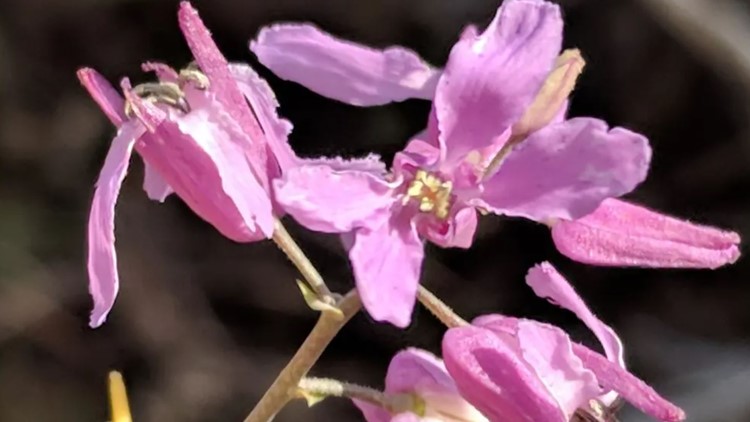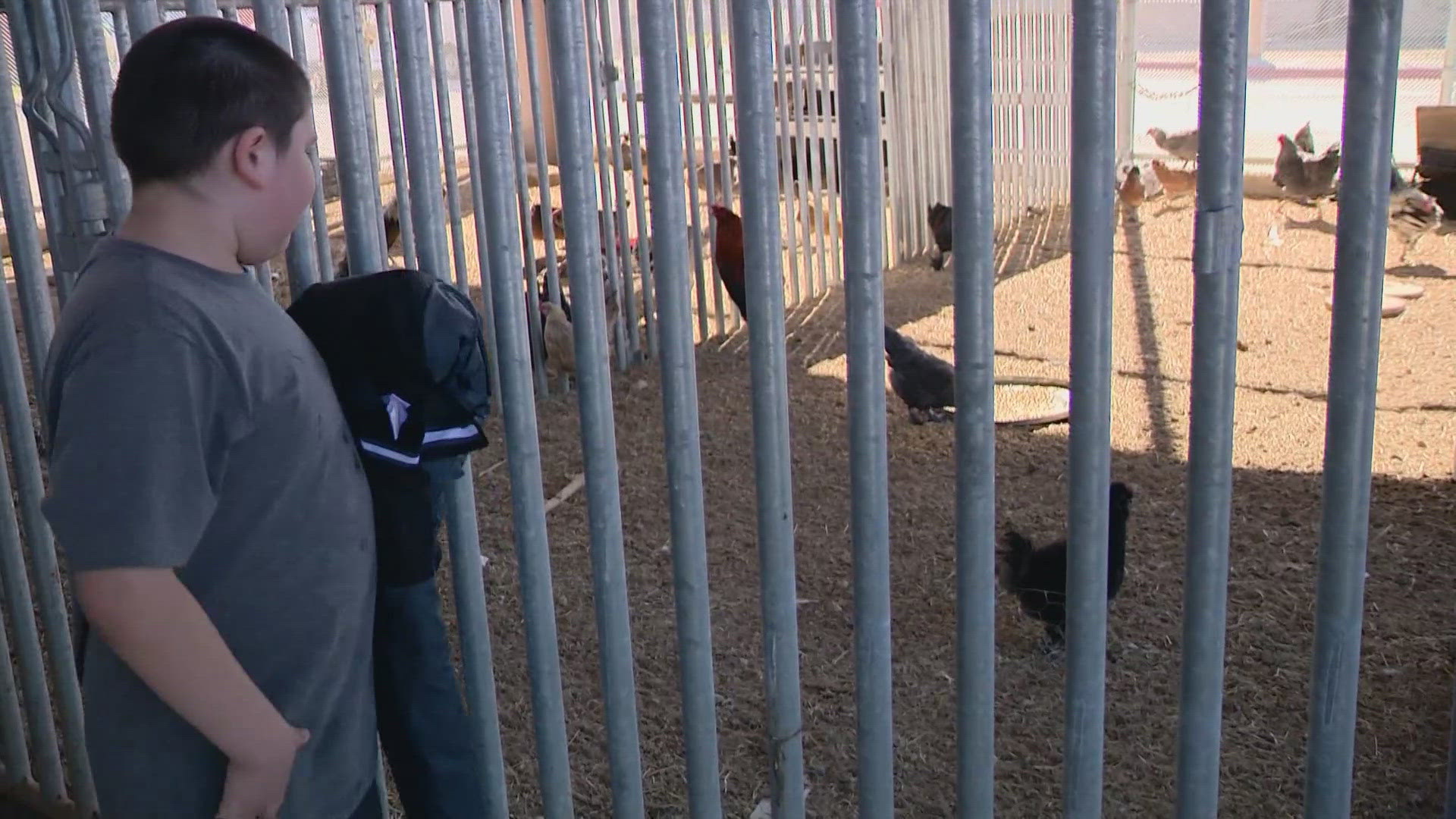The bracted twistflower, a Texas wildflower threatened by growing urban sprawl, was declared a threatened species Monday by the U.S. Fish and Wildlife Service.
The tall, bright purple flower, which has seen significant decline across its range in the rapidly developing I-35 corridor between Austin and San Antonio, will receive protection under the Endangered Species Act. Close to 1,600 acres across four Texas counties — Uvalde, Medina, Bexar and Travis — have been designated critical habitat for the plant.
The protection, which comes after the Center for Biological Diversity filed a lawsuit in 2021 against the federal agency, will lead to the development of a recovery plan to reintroduce the plant and prescribe conservation actions. It will also make removing, cutting, digging up or harming the plant illegal.
“Very few busy Texans in the world today pause to think about these plants … but they still play an absolutely essential role in our world,” said Michael J. Robinson, senior conservation advocate at the Center for Biological Diversity.
The once thriving Hill Country wildflower blooms in the spring and requires specific soil that is found only near the edge of Glen Rose and the Edwards Plateau region. It also needs subsurface water and a mix of sun and shade that’s provided by ashe juniper trees and live oaks. Its lavender-colored flowers supply nectar and pollen for Texas bee species.
“This is a species that could be recovered within a few decades if its remaining habitats are managed appropriately,” Chris Best, state botanist for the Fish and Wildlife Service in Texas, said in a press release.
Conservationists say wildflower populations are increasingly separated from each other to the extent that pollinators like bees that ensure reproduction can’t make it from location to location, which increases the loss of genetic diversity and hurts the plant’s ability to adapt to other threats.
The Endangered Species Act defines a threatened species as “any species which is likely to become an endangered species within the foreseeable future throughout all or a significant portion of its range.” The wildflower has lost habitat to development, hungry white-tailed deer and non-native grazing animals.
It’s the second Texas plant the federal agency has listed under the Endangered Species Act this year. Last month, it added the prostrate milkweed, a rare Texas plant crucial for the survival of monarch butterflies, to the endangered list. All 24 known populations of prostrate milkweed are found within 8 miles of the Rio Grande.
“Protecting prostrate milkweed is a big deal for the monarch butterflies who lay their eggs on these plants as they fly through Texas after spending the winter in Mexico,” said Tierra Curry, a senior scientist at the Center for Biological Diversity.
The creamy-white plant is imperiled by loss of genetic diversity due to clearing land. Development such as border wall construction, oil and gas drilling and building wind turbines, along with road maintenance, all destroy soil the plant needs to survive, according to an assessment by U.S. Fish and Wildlife Service scientists. President Joe Biden paused most border barrier construction in 2020.
The Fish and Wildlife Service has designated approximately 661 acres of critical habitat for the plant in Starr and Zapata counties.
The rare plant is identified by its triangular foliage with wavy margins that appear like stars. The plant wilts during droughts but uses its long stem to soak up rain during tropical storms.
The prostrate milkweed listing took effect March 30. The bracted twistflower listing goes into effect next month.
The Texas Tribune is a nonprofit, nonpartisan media organization that informs Texans — and engages with them — about public policy, politics, government and statewide issues.
>MORE TEXAS NEWS:
>TRENDING ON KENS 5 YOUTUBE:



